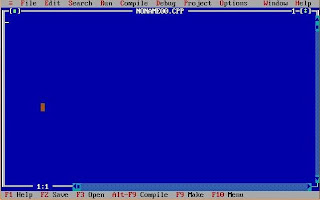Dear readers,
After successfully learn the compiling C program and linking C program lessons. You are now ready to learn how to execute C program on your computer.
SO FRIENDS LETS START LEARNING
- Executing C program :-
For Example :-
In Windows environment, when the name of an executable file is double clicked. The Loader loads the file into the computer memory for execution on the CPU.
In TC Editor, you can compile and run the program by pressing the shortcut key Ctrl+F9 or by selecting Run command from Run menu of Turbo C IDE. The program is first compiled and then run on the computer.
When the program is run, the program's output is printed on the screen but not to the IDE window. To see the program's output, select "User screen" command from the window menu, or press keyboard shortcut Alt + F5. You will see normal DOS screen with program output (if any).
 Some errors may occur during the execution of the program. These errors are called the execution errors. These errors may halt the system.
Some errors may occur during the execution of the program. These errors are called the execution errors. These errors may halt the system.



